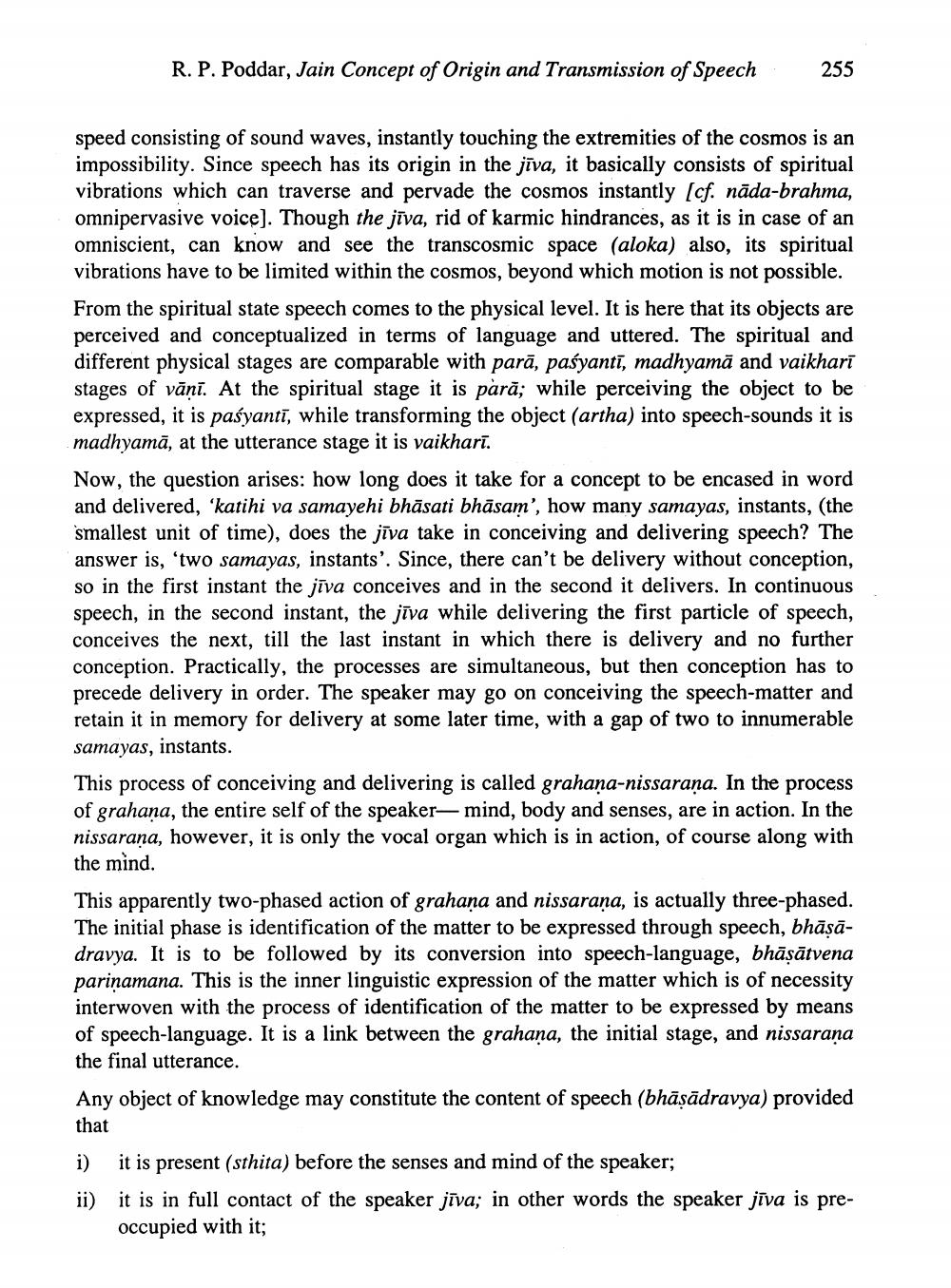________________
R. P. Poddar, Jain Concept of Origin and Transmission of Speech
255
speed consisting of sound waves, instantly touching the extremities of the cosmos is an impossibility. Since speech has its origin in the jīva, it basically consists of spiritual vibrations which can traverse and pervade the cosmos instantly (cf. nāda-brahma, omnipervasive voice). Though the jīva, rid of karmic hindrances, as it is in case of an omniscient, can know and see the transcosmic space (aloka) also, its spiritual vibrations have to be limited within the cosmos, beyond which motion is not possible. From the spiritual state speech comes to the physical level. It is here that its objects are perceived and conceptualized in terms of language and uttered. The spiritual and different physical stages are comparable with parā, paśyanti, madhyamā and vaikharī stages of vānī. At the spiritual stage it is pară; while perceiving the object to be expressed, it is pasyanti, while transforming the object (artha) into speech-sounds it is madhyamā, at the utterance stage it is vaikharī. Now, the question arises: how long does it take for a concept to be encased in word and delivered, 'katihi va samayehi bhāsati bhāsam', how many samayas, instants, (the smallest unit of time), does the jīva take in conceiving and delivering speech? The answer is, 'two samayas, instants'. Since, there can't be delivery without conception, so in the first instant the jīva conceives and in the second it delivers. In continuous speech, in the second instant, the jīva while delivering the first particle of speech, conceives the next, till the last instant in which there is delivery and no further conception. Practically, the processes are simultaneous, but then conception has to precede delivery in order. The speaker may go on conceiving the speech-matter and retain it in memory for delivery at some later time, with a gap of two to innumerable samayas, instants. This process of conceiving and delivering is called grahaņa-nissarana. In the process of grahana, the entire self of the speaker- mind, body and senses, are in action. In the nissarana, however, it is only the vocal organ which is in action, of course along with the mind. This apparently two-phased action of grahana and nissarana, is actually three-phased. The initial phase is identification of the matter to be expressed through speech, bhāṣādravya. It is to be followed by its conversion into speech-language, bhāṣātvena pariņamana. This is the inner linguistic expression of the matter which is of necessity interwoven with the process of identification of the matter to be expressed by means of speech-language. It is a link between the grahana, the initial stage, and nissarana the final utterance. Any object of knowledge may constitute the content of speech (bhāṣādravya) provided that i) it is present (sthita) before the senses and mind of the speaker; ii) it is in full contact of the speaker jīva; in other words the speaker jīva is pre
occupied with it;




